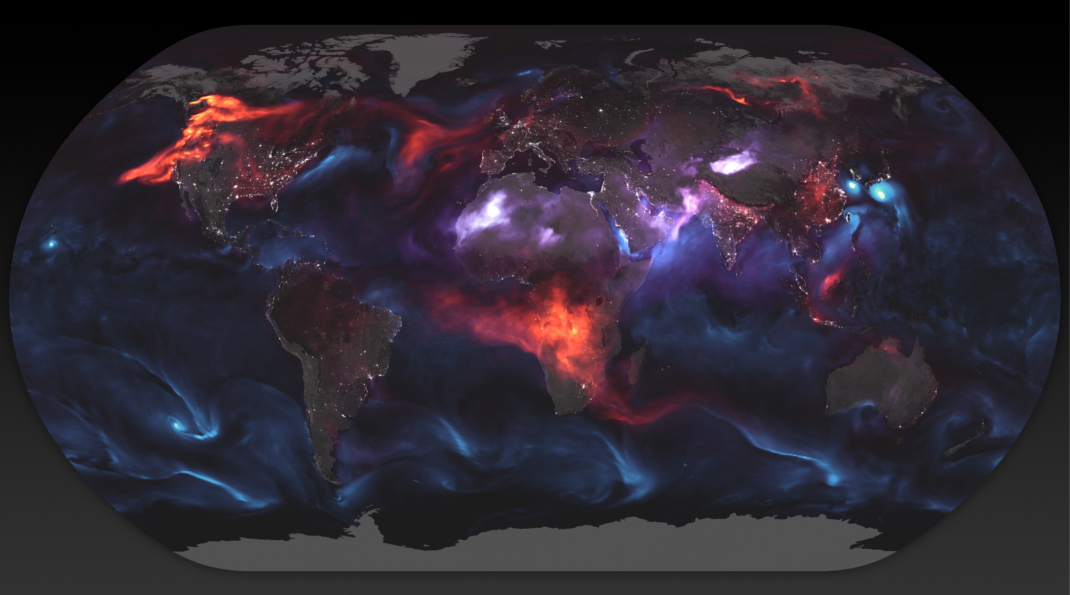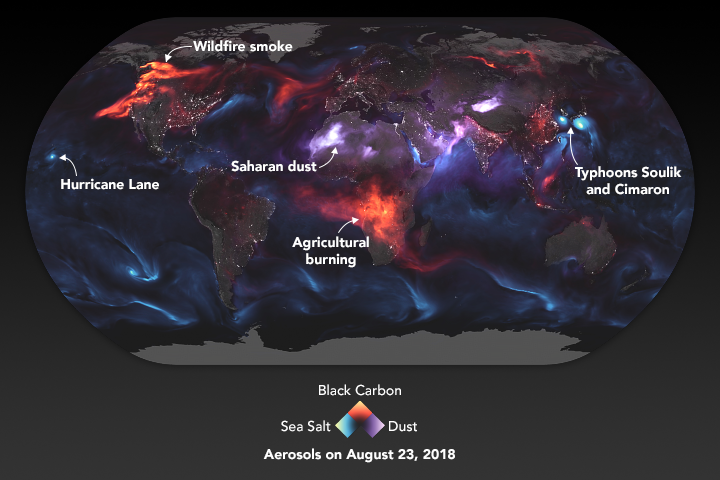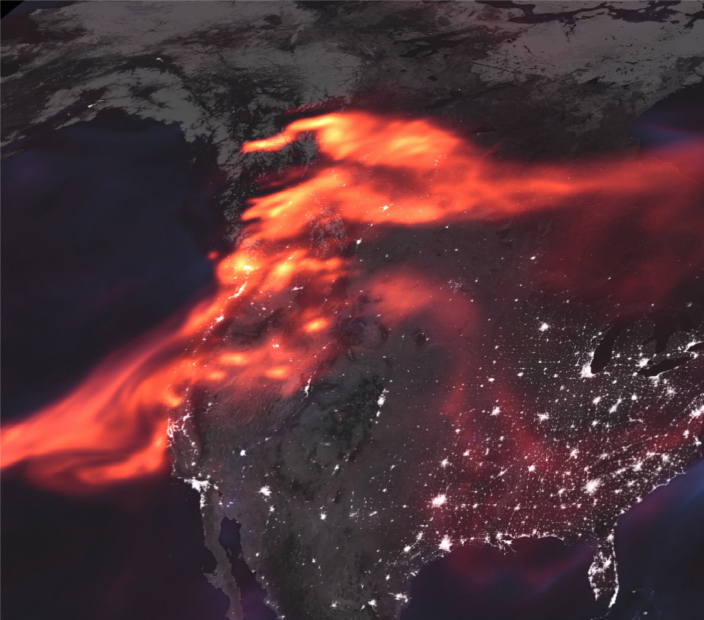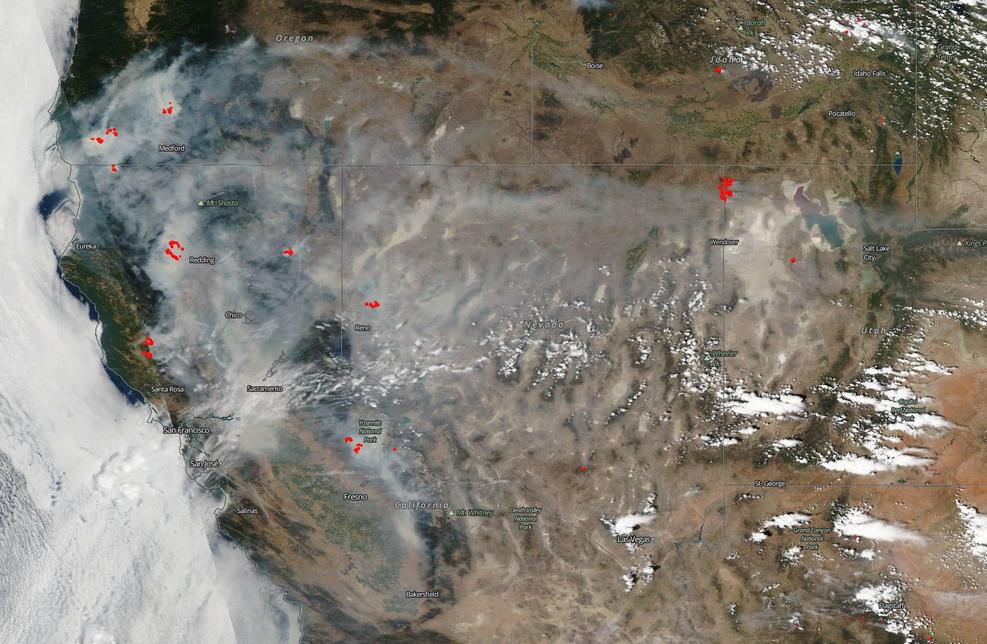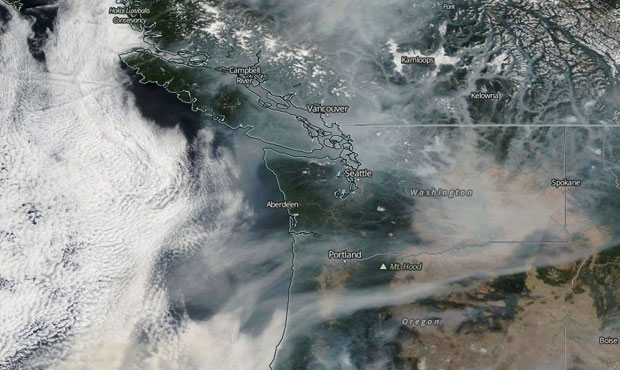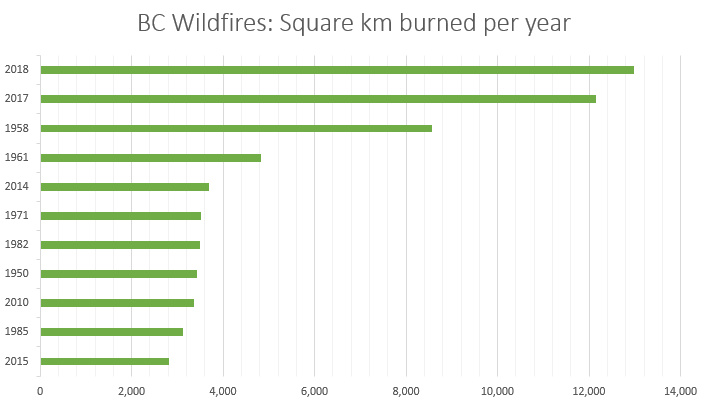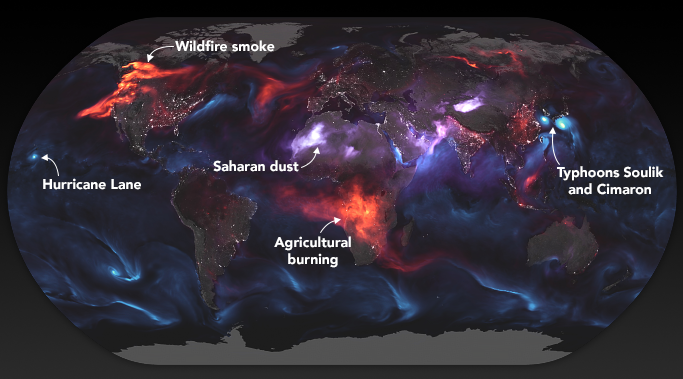North America’s Devastating Wildfires, Viewed From Space
If you live on the west coast of North America, it’s likely that you’ve felt a bit smoked out, lately. Wildfires in British Columbia, Canada are already the worst in the province’s history, while California has had a particularly rough season with human deaths, evacuations, and billions of dollars of damage. Oregon has one confirmed death from a wildfire in mid-July, and Washington hasn’t gotten off easy, either. On July 31, 2018 a state of emergency was declared in the Evergreen State.
Visualizing Wildfires From Space
Today’s image comes to us from NASA, and it shows aerosols around the world including those originating from volcanoes, desert dust, cloud cover, sea-salt – and of course, smoke. Here’s the same image with labels, indicating black carbon on the west coast of the continent:
The wildfires are just as visible as the massive slash-and-burning occurring in Central Africa, hurricanes and typhoons, and even the dust swirling up from the Sahara, the world’s largest desert. Here’s a visualization of the fires in North America, with some extra zoom:
It’s clear from this image that smoke isn’t just affecting the coast – in fact, experts say it has been travelling as far as Ireland, in lesser concentrations of course.
Other Visuals
While we thought the visualization above was the most striking, there are countless of other examples from the last month that show the extent of wildfires and smoke on the west coast. Here’s another shot from NASA from a few weeks ago, during peak wildfire season in California and Oregon:
And here’s an image of Seattle and Vancouver from mid-August, when smoke from Canadian fires was so bad in those cities that it was like “inhaling seven cigarettes” per day:
Future Forecast
As we roll into September, the worst of the wildfire season is over. Unfortunately, it’s already been the worst in British Columbia’s history. Here are the 10 worst fire seasons graphed since 1950, based on square kilometers burned: Data as of Aug 29, 2018, and from the BC Forest Service While this year has been an anomaly, it may also be a preview of what’s to come. One recent report out of California said that the number of wildfires over 25,000 acres is likely to increase by 50% leading up to 2050. Is this the new normal?
on Over recent decades, farmers have been able to more than double their production of crops thanks to fertilizers and the vital nutrients they contain. When crops are harvested, the essential nutrients are taken away with them to the dining table, resulting in the depletion of these nutrients in the soil. To replenish these nutrients, fertilizers are needed, and the cycle continues. The above infographic by Brazil Potash shows the role that each macronutrient plays in growing healthy, high-yielding crops.
Food for Growth
Nitrogen, phosphorus, and potassium (NPK) are three primary macronutrients that are the building blocks of the global fertilizer industry. Each plays a key role in plant nutrition and promoting crop growth with higher yields. Let’s take a look at how each macronutrient affects plant growth. If crops lack NPK macronutrients, they become vulnerable to various stresses caused by weather conditions, pests, and diseases. Therefore, it is crucial to maintain a balance of all three macronutrients for the production of healthy, high-yielding crops.
The Importance of Fertilizers
Humans identified the importance of using fertilizers, such as manure, to nourish crops dating back to nearly 6,000 to 2,400 BC. As agriculture became more intensive and large-scale, farmers began to experiment with different types of fertilizers. Today advanced chemical fertilizers are used across the globe to enhance global crop production. There are a myriad of factors that affect soil type, and so the farmable land must have a healthy balance of all three macronutrients to support high-yielding, healthy crops. Consequently, arable land around the world varies in the amount and type of fertilizer it needs. Fertilizers play an integral role in strengthening food security, and a supply of locally available fertilizer is needed in supporting global food systems in an ever-growing world. Brazil is one of the largest exporters of agricultural goods in the world. However, the country is vulnerable as it relies on importing more than 95% of its potash to support crop growth. Brazil Potash is developing a new potash project in Brazil to ensure a stable domestic source of this nutrient-rich fertilizer critical for global food security. Click here to learn more about fertilizer and food production in Brazil.
